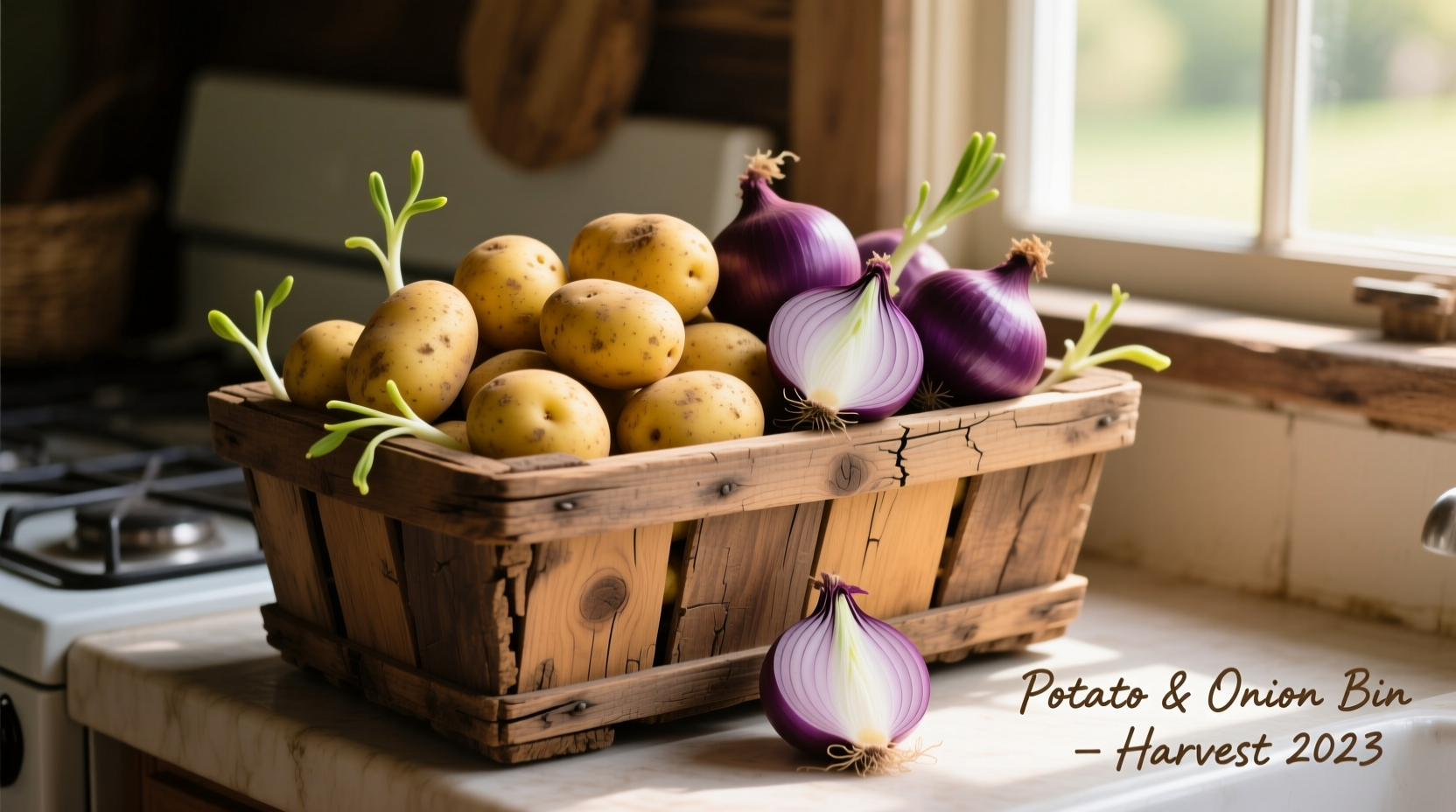Discover the science-backed storage solutions that keep your root vegetables fresh for months. Whether you're stocking up after a farmers' market haul or organizing your pantry for seasonal cooking, proper storage makes a dramatic difference in flavor, texture, and shelf life.
Why Potatoes and Onions Demand Separate Storage
Many home cooks make the critical mistake of storing potatoes and onions together, unknowingly accelerating spoilage. Potatoes naturally release ethylene gas during storage, which triggers onions to sprout prematurely. Conversely, onions emit compounds that cause potatoes to soften and decay faster. This biological incompatibility means even proximity in the same pantry can reduce shelf life by 30-50%.
According to the USDA Food Data Central, both vegetables maintain optimal quality only when stored under specific environmental conditions that differ significantly. Understanding these requirements transforms how you organize your kitchen storage.
| Storage Factor | Potatoes | Onions |
|---|---|---|
| Optimal Temperature | 45-50°F (7-10°C) | 32-45°F (0-7°C) |
| Relative Humidity | 90-95% | 65-70% |
| Light Exposure | Total darkness | Darkness |
| Ventilation Needs | Moderate airflow | High airflow |
Choosing the Right Storage Container
The ideal potato onion bin isn't a single container but two specialized solutions that address their different requirements. Look for these critical features when selecting storage containers:
For Potatoes: Breathable, Light-Blocking Bins
- Material: Natural fiber baskets, wooden crates, or perforated plastic bins
- Ventilation: Multiple small openings (1/8 inch diameter) covering 15-20% of surface area
- Darkness: Opaque materials or storage in completely dark locations
- Capacity: Maximum 25 pounds to prevent crushing lower layers
Research from the University of Minnesota Extension confirms that proper ventilation reduces moisture buildup by 40%, significantly decreasing rot risk. Avoid airtight containers which trap moisture and accelerate spoilage.
For Onions: High-Airflow Mesh Solutions
- Material: Mesh bags, wire baskets, or slotted wooden crates
- Ventilation: At least 30% open surface area for maximum airflow
- Moisture Control: Include desiccant packets in humid climates
- Arrangement: Single layer storage prevents moisture transfer between bulbs

Seasonal Storage Timeline and Expectations
Understanding how storage conditions affect longevity helps plan your cooking schedule. The UC Davis Postharvest Technology Center has documented these typical shelf lives under proper conditions:
| Vegetable | Room Temperature (68-72°F) | Cool Storage (45-50°F) | Refrigeration (32-40°F) |
|---|---|---|---|
| Potatoes | 2-3 weeks | 2-3 months | Not recommended |
| Onions | 1-2 months | 3-4 months | 4-6 months |
Notice potatoes shouldn't be refrigerated, as cold temperatures convert starch to sugar, altering flavor and texture. Onions, however, benefit from cooler temperatures for extended storage.
Practical Storage Setup for Any Kitchen
You don't need a root cellar to implement professional-grade storage. These space-efficient solutions work in standard kitchens:
Small Space Solutions
- Use under-sink cabinet for potatoes (dark, cool location)
- Hang onions in mesh bags from pantry door hooks
- Store both in separate drawers of a cool basement corner
Avoid These Common Mistakes
- Storing near heat sources like ovens or refrigerators
- Keeping in plastic grocery bags (traps moisture)
- Washing before storage (increases moisture content)
- Storing near apples or other ethylene-producing fruits
When properly stored, potatoes maintain their starch structure for perfect roasting and mashing, while onions retain their pungency and crisp texture for fresh applications. The National Center for Home Food Preservation confirms that correct storage conditions preserve nutritional value up to 50% longer than improper storage.
Troubleshooting Storage Problems
Even with proper containers, issues can arise. Here's how to address common problems:
- Sprouting potatoes: Immediately remove affected tubers; store remainder with an apple (absorbs ethylene)
- Soft onions: Increase airflow and reduce humidity; separate any damp bulbs immediately
- Green spots on potatoes: Cut away affected areas (contains solanine); improve light protection
- Mold development: Wipe containers with vinegar solution; replace with fresh, dry storage medium
Regular weekly inspections catch problems early. Remove any compromised vegetables immediately to prevent spoilage from spreading to healthy produce.











 浙公网安备
33010002000092号
浙公网安备
33010002000092号 浙B2-20120091-4
浙B2-20120091-4